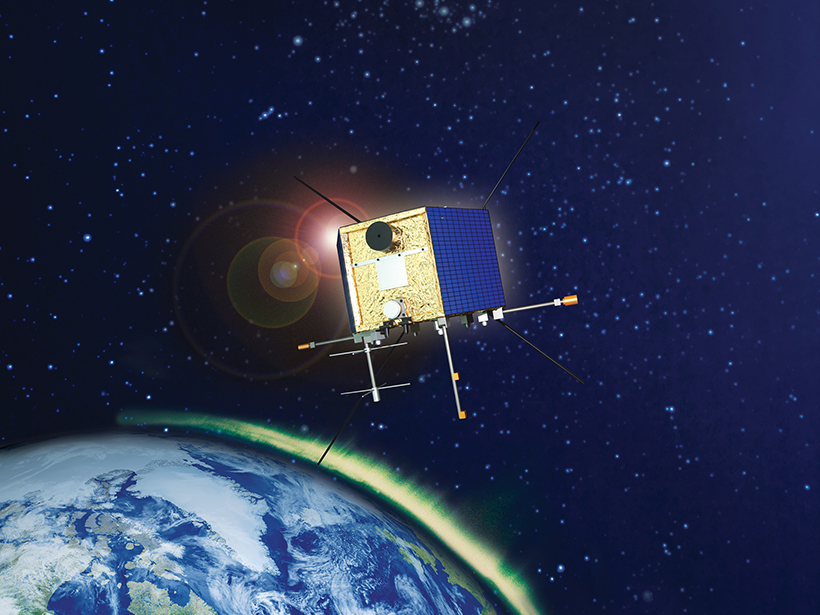Source: Journal of Geophysical Research: Space Physics
The border between Earth and space is a turbulent one: Ions from the solar wind and other forms of space weather batter Earth’s atmosphere, which is constantly churning and slowly leaking away into space. Solar storms in particular whip the upper atmosphere into a frenzy, with potentially devastating effects on space-based technologies like GPS navigation and radio communication.
To better understand how space weather and solar storms interact with Earth’s upper atmosphere, the Canadian Space Agency launched the Cascade, Smallsat and Ionospheric Polar Explorer (CASSIOPE) satellite in 2013. The Enhanced Polar Outflow Probe (e-POP), one of two payloads aboard CASSIOPE, holds a suite of eight scientific instruments, all studying different aspects of near-Earth space. Here Yau and Howarth present the first scientific results from one of those instruments, the imaging and rapid-scanning ion mass spectrometer (IRM).
The IRM takes samples of ions from Earth’s ionosphere and magnetosphere and identifies the energy-to-charge ratio (E/q) and mass-to-charge ratio (M/q) of each ion, as well as the angle from which it approached the satellite. As ions approach the IRM, a time-of-flight gate opens and closes rapidly to control the flow of ions entering the apparatus, selecting for specific M/q values. Then, a hemispherical electrostatic analyzer uses an electric field to disperse the ions onto an array of 64 detector pixels according to their E/q and angle of approach.
Using data collected by the IRM, the researchers were able to determine what sorts of ions were observed and the energies of those ions. There was some uncertainty because of overlaps in the possible values for various types of ions: singly charged cations of nitrogen (N+) and oxygen (O+), for example, have very similar atomic masses, which makes them difficult to separate when both land on the same detector pixel.
Despite that uncertainty, the authors found high densities of heavy “minor” doubly charged oxygen cations (O2+), N+, and molecular ions at the upper edge of Earth’s ionosphere. These heavy ions, particularly N+, play an important role in atmospheric escape over long time scales. Therefore, not only will e-POP’s study of space weather provide insight into the types of ions energized by solar storms, but it could also help researchers understand the long-term evolution of the Earth’s atmosphere. (Journal of Geophysical Research: Space Physics, doi:10.1002/2016JA022699, 2016)
—Leah Crane, Freelance Writer
Citation:
Crane, L. (2016), Tracking ions at the edge of the atmosphere, Eos, 97, https://doi.org/10.1029/2016EO056601. Published on 02 August 2016.
Text © 2016. The authors. CC BY-NC-ND 3.0
Except where otherwise noted, images are subject to copyright. Any reuse without express permission from the copyright owner is prohibited.

